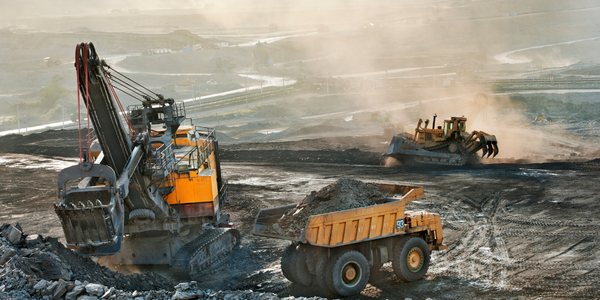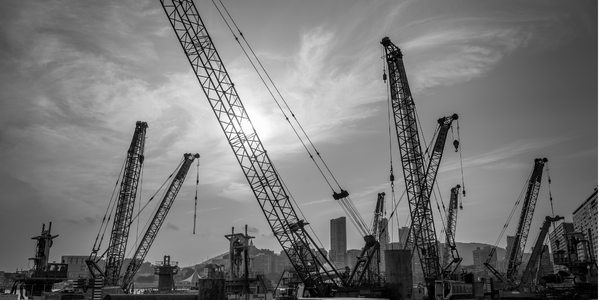Customer Company Size
Large Corporate
Region
- Africa
Product
- IsoMetrix EHS
Implementation Scale
- Enterprise-wide Deployment
Impact Metrics
- Employee Satisfaction
Technology Category
- Functional Applications - Remote Monitoring & Control Systems
Applicable Industries
- Mining
Applicable Functions
- Discrete Manufacturing
Use Cases
- Remote Asset Management
Services
- System Integration
About The Customer
Zimplats is Zimbabwe’s largest mining operation with 6000 employees. The company has achieved nine million fatality-free hours and a lost time injury frequency rate (LTIFR) of 0.19 per million hours worked. These safety statistics bear testimony to the extraordinary achievements of the board, management, and employees of Zimplats. The company has a culture of zero tolerance when it comes to safety. Everyone in the company understands and appreciates that. Leadership resilience is crucial. The company has self-directed work teams that take ownership of their safety responsibilities.
The Challenge
In 2008, Zimplats, Zimbabwe’s largest mining operation, analyzed its top risks and identified technologies that would reduce these risks in its operations. The company decided to implement an integrated system for EHSQ management. The safety system is embedded within their production systems. Recently, the mine had a fall of ground collapse, with zero injuries. The sensors that had been installed for remote monitoring of ground stability had allowed the company to evacuate everyone before the collapse occurred.
The Solution
Zimplats implemented an integrated system for EHSQ management. The safety system is embedded within their production systems. The company has subsequently automated their EHS systems, implementing IsoMetrix for management of safety, health, and environment. The company also installed sensors for remote monitoring of ground stability. This technology allowed the company to evacuate everyone before a collapse occurred. The company also carries out broader community-based safety programs and mental health programs.
Operational Impact
Quantitative Benefit

Case Study missing?
Start adding your own!
Register with your work email and create a new case study profile for your business.
Related Case Studies.

Case Study
Underground Mining Safety
The goal was to produce a safety system to monitor and support underground mining operations; existing systems were either too simple (i.e. phone line) or overly complex and expensive, inhibiting deployment, and providing little-to-no support in event of an accident. Given the dangerous nature of the mining work environment and the strict regulations placed on the industry, the solution would have to comply with Mine Safety and Health Administration (MSHA) regulations. Yet the product needed to allow for simple deployment to truly be a groundbreaking solution - increasing miner safety and changing daily operations for the better.

Case Study
Mining Firm Quadruples Production, with Internet of Everything
Dundee Precious Metal’s flagship mine, in Chelopech, Bulgaria, produces a gold, copper, and silver concentrate set a goal to increase production by 30%. Dundee wanted to increase production quality and output without increasing headcount and resources, improve miner safety, and minimize cost.

Case Study
Fastenal Builds the Future of Manufacturing with MachineMetrics
Fastenal's objective was to better understand their machine downtime, utilization, quality issues, and to embrace cutting-edge manufacturing technology/process improvement capabilities to bring their team to the next level. However, there was a lack of real-time data, visualization, and actionable insights made this transition impossible.

Case Study
Joy Mining Systems
Joy equipment faces many challenges. The first is machine integration and control. The business end of the machine has a rapidly-spinning cylinder with 6-inch diamond-studded cutting teeth. It chews through rock at rates measured in tens of tons per minute. The system grinds through the rock in front, creating a rectangular mine tunnel. Hydraulic lifters support the ceiling as the machine moves forward. Automated drills and screws drive 3-ft long screws into the ceiling to stabilize it. The rock and coal fall into a set of gathering "fingers" below the cutting cylinder. These fingers scoop up the rock and coal and deposit it onto a conveyor belt. The conveyor passes under the machine and out the back. A train of conveyor belt cars, up to a mile long, follows the cutter into the mine. The rock shoots along this train at over 400 feet per minute until it empties into rail cars at the end. Current systems place an operator cage next to the cutter. Choking dust (potentially explosive), the risk of collapse and the proximity of metal and rock mayhem make the operator cage a hazardous location.

Case Study
Improved Monitoring in Industrial Manufacturing Facility
When your crane is moving tons of magma-hot iron, you can’t afford an unexpected failure. McWane Ductile knew monitoring the crane motor metrics within their facility could help prevent a mechanical failure that would strand an enormous bucket of molten metal overhead. Unfortunately, their legacy wired monitoring system couldn’t work with moving objects in this extreme environment. If they could integrate wireless capabilities into their existing equipment they could extend their monitoring capabilities without starting over from scratch.




